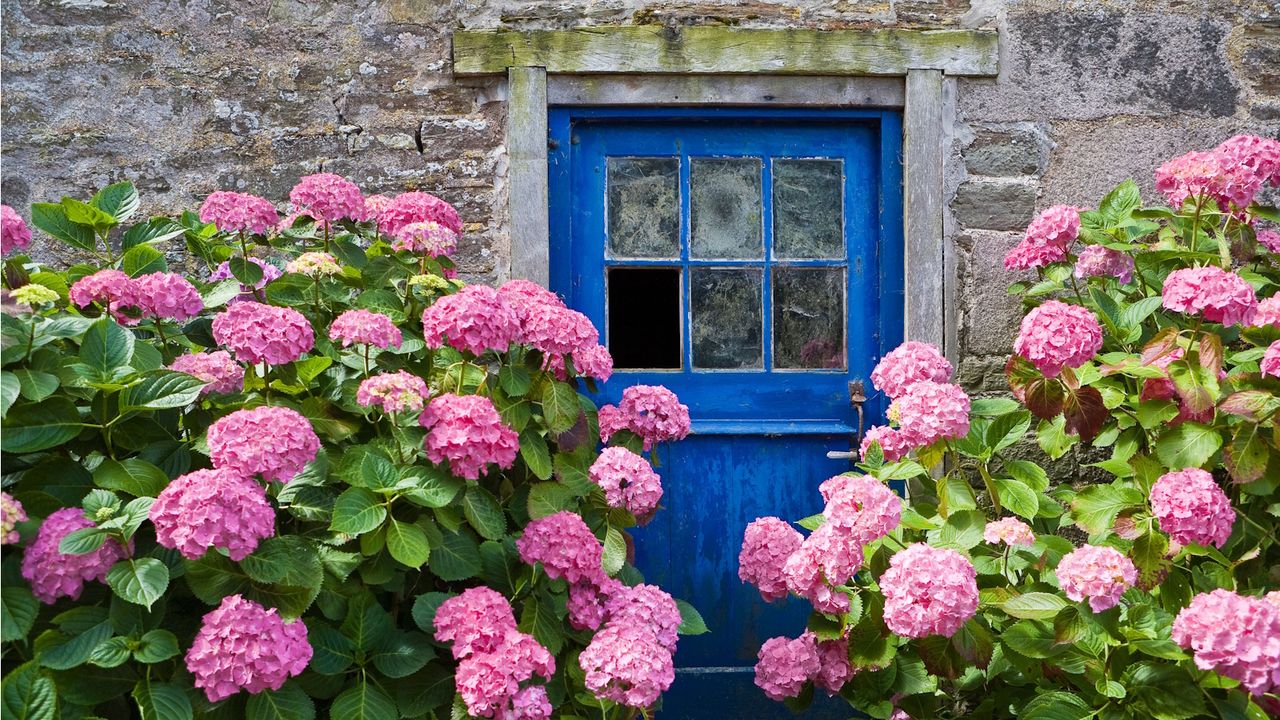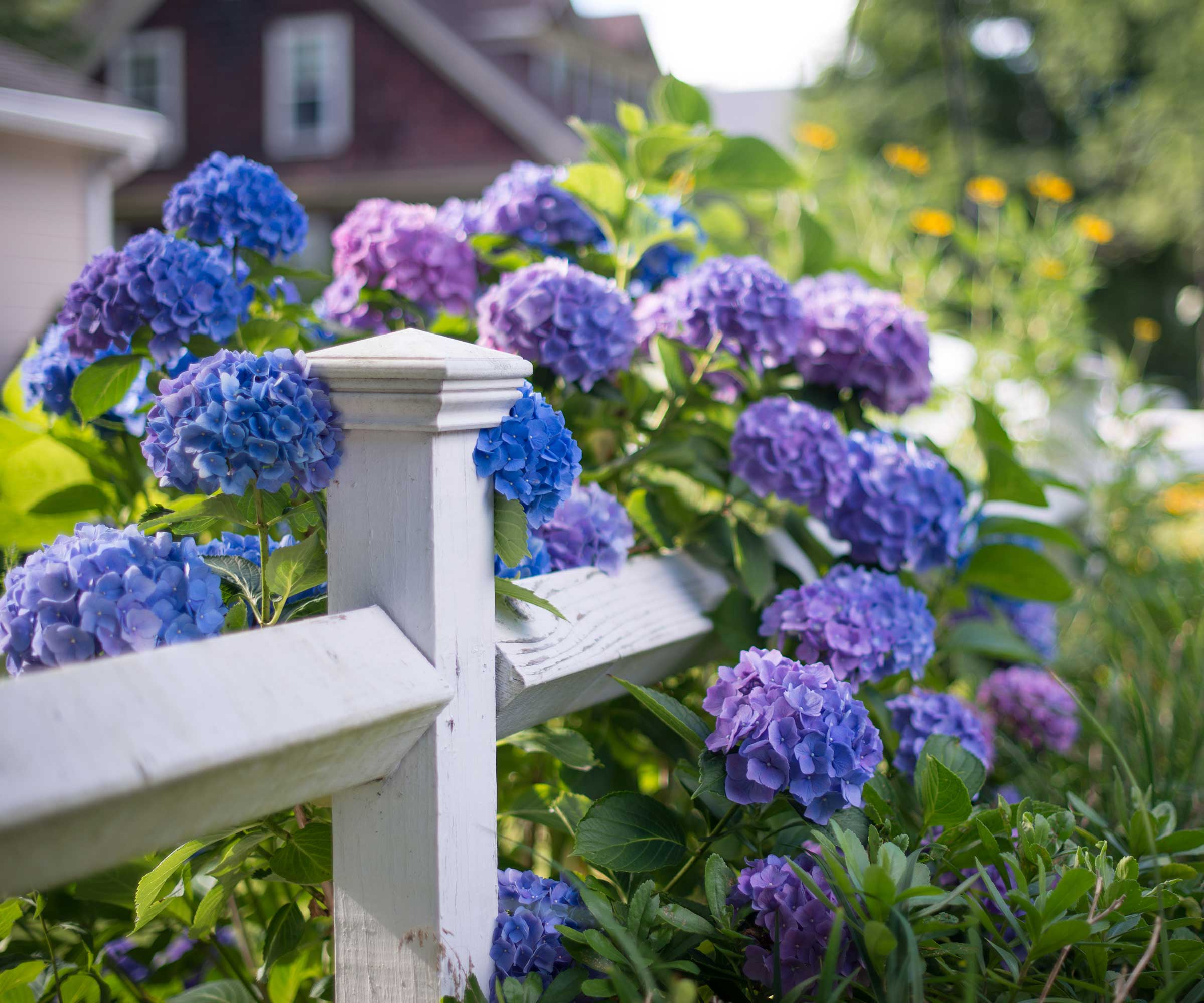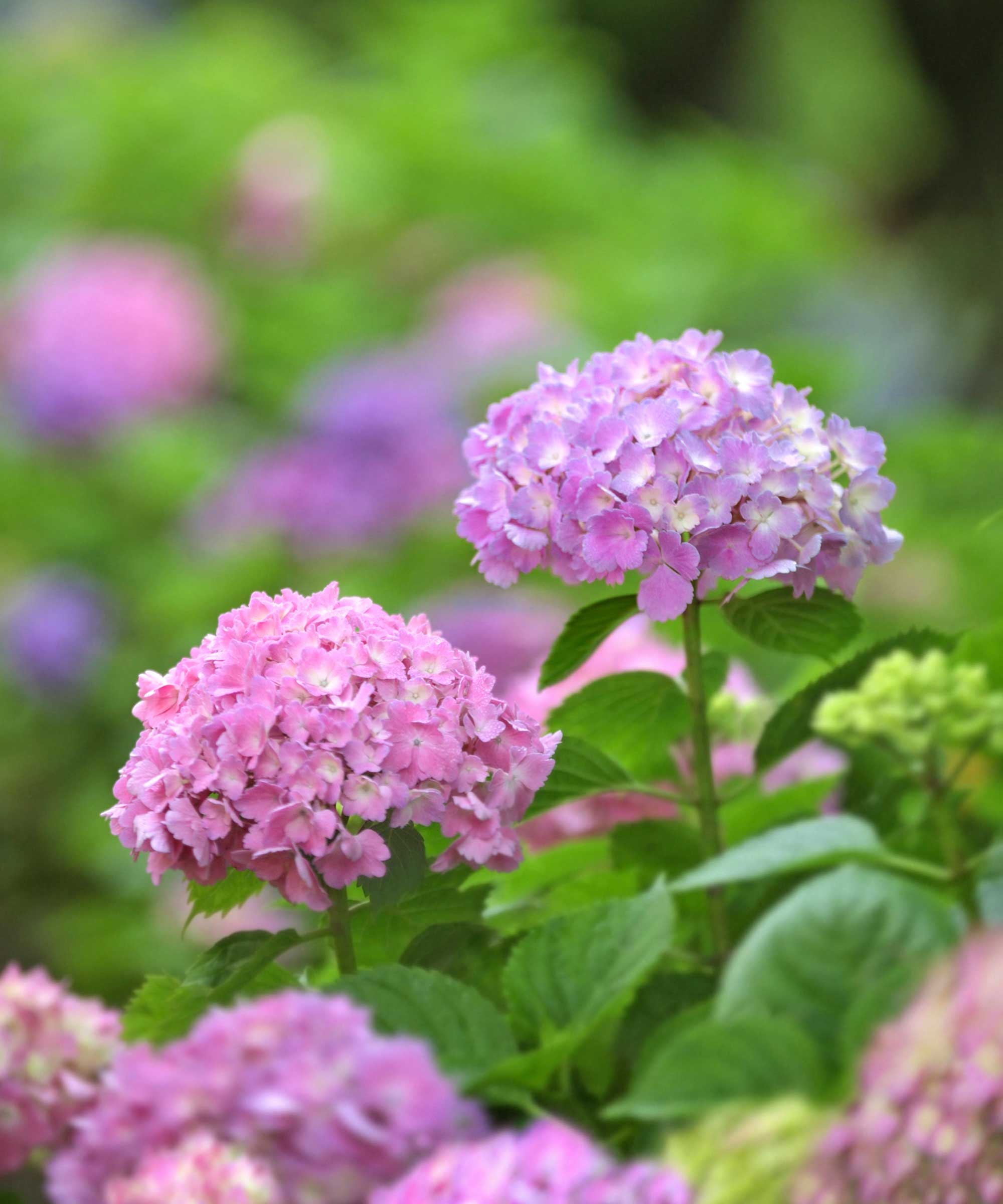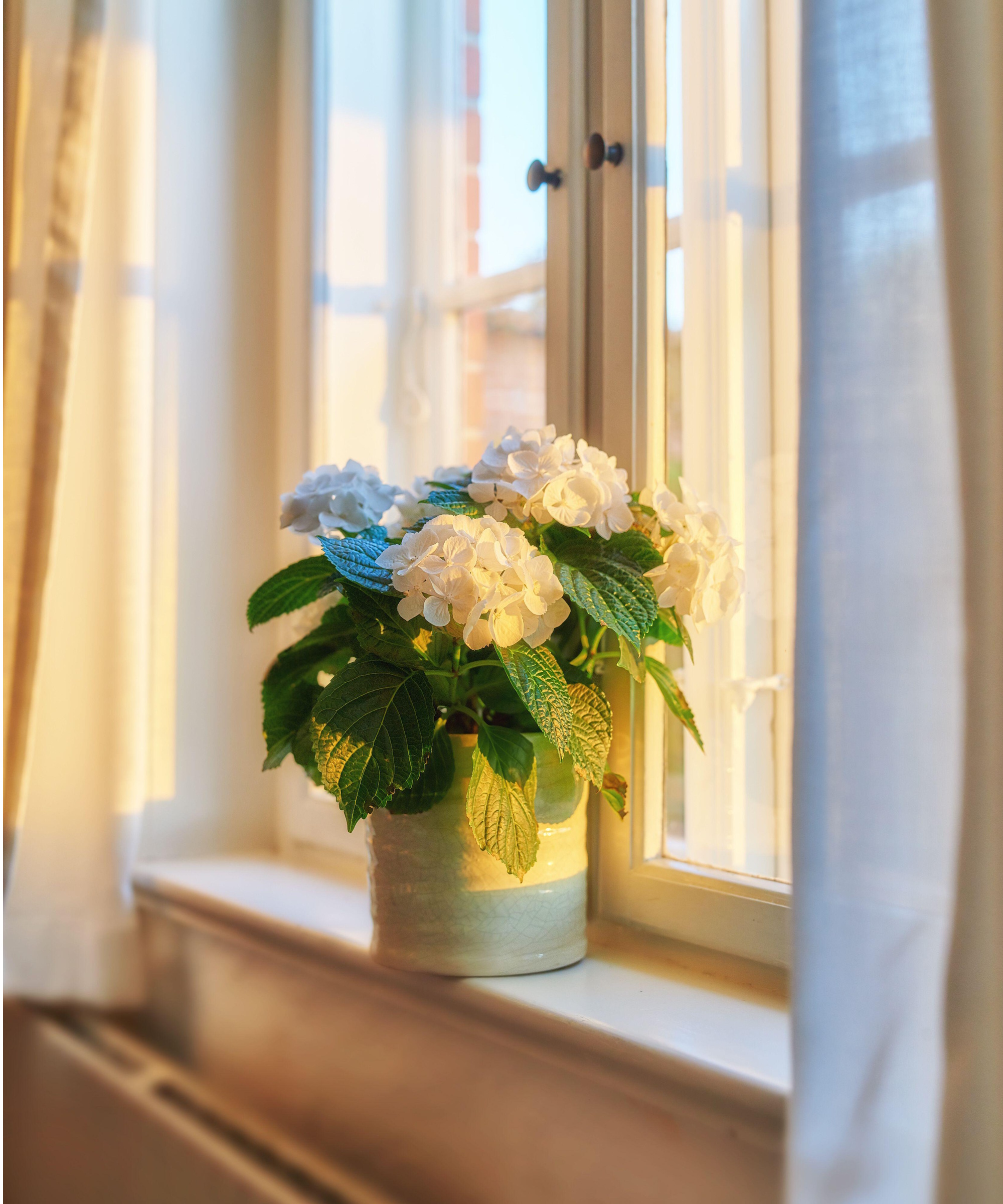
Have you ever been wowed by a hydrangea in full, vibrant bloom on display in a supermarket, only to bring it home, plant it in your yard, and watch it quickly fade away? That's because these are not the same as hydrangeas bred to grow in a garden. Rather, they're known as florist hydrangeas.
Unlike growing hydrangeas as part of your cottage garden, florist hydrangeas are bred for short-lived (yet spectacular) indoor displays. You usually spot them around spring holidays, as they make for festive décor and beautiful gifts. As long as you follow the tips to grow hydrangeas indoors, these stunning potted shrubs will thrive. But, start attempting to grow them alongside the rest of your backyard plants, and they'll quickly turn brown and wilt.
Don't fret though; you can still make the most of your florist hydrangeas by caring for them correctly. Here, a hydrangea expert unpacks what exactly florist hydrangeas are and why they aren't suitable for the garden, plus tips on how to look after them so you can still enjoy their dazzling beauty.
Florist hydrangeas vs garden hydrangeas: what's the difference?

'We all want to plant those fabulous florist hydrangeas. Except it usually doesn't work,' says Lorraine Ballato, author of Success with Hydrangeas.
'These plants are forced so they flower when almost nothing else is in full bloom (Easter, Mother's Day, etc.) and when we're hungry for color,' she adds.
Florist hydrangeas tend to be a bigleaf hydrangea (from Walmart). This is a hydrangea variety native to warmer climes in Asia, which can be recreated in greenhouses and other controlled indoor environments to kickstart blooming.
It works much the same as forcing bulbs indoors for Christmas, where these controlled environments provide specific conditions to trick hydrangeas into flowering early. This typically happens out of season, as Lorraine mentions, in spring.
In comparison, hydrangeas for the garden usually bloom from summer to fall. If your hydrangeas aren't blooming during this time (and they aren't florist hydrangeas), it might just be that they're lacking sun, experiencing a moisture issue, or have a disease problem.
Why shouldn't you plant florist hydrangeas outdoors?

Having been forced to bloom earlier than intended, florist hydrangeas are susceptible to shock from the outdoor conditions of late winter and early spring.
When you therefore plant them outdoors during this time, it's common to watch your hydrangea flowers turn brown or your hydrangeas wilt.
'The varieties that are forced can survive outdoors, but their flower buds aren't hardy and don't stand up to average winter/early-spring conditions,' explains Lorraine.
'So, no new flowers emerge. In some warm US hardiness zones, like Atlanta and the Pacific Northwest, those buds can sometimes make it, however,' she notes.
It's also not uncommon for florist hydrangea roots to be underdeveloped. In usual conditions, they would still be spending spring establishing strong root growth, ready to support flowering later on.
But, forced florist hydrangeas didn't have this time. Instead, their roots are weaker and less able to support longer periods of blooming, resulting in flowers that fade more quickly. This also impacts their ability to develop new flower buds, as Lorraine points out.
Of course, this isn't to say garden hydrangeas won't experience similar issues. You still need to take into consideration places to never plant hydrangeas and familiarize yourself with debunked hydrangea myths to be successful with these cottage garden shrubs.
Shop your hydrangea growing kit
This fertilizer is specially formulated to support hydrangea growth and encourage more vibrant blooms.
Use these pruning shears to prune and deadhead your hydrangea. Correct pruning will keep your shrub healthy and neat.
This compost is ideal for acid-loving plants, like azaleas and hydrangeas. It can even encourage hydrangeas to turn blue.
How to care for florist hydrangeas

If realize you do have florist hydrangeas, don't fret. You can still enjoy them, but it requires different care to garden hydrangeas.
'Caring for florist hydrangeas is easy. Don't let them dry out or drown them. You can place them just about anywhere indoors,' says Lorraine.
As Lorraine notes, moisture management is the most important thing when it comes to keeping florist hydrangeas happy, and watering hydrangeas in the garden is also key to get right.
Use this soil moisture meter from Amazon to check when the top couple of inches have dried out, a good time to top up water levels.
You should also remove any decorative foil on your florist hydrangea's packaging – it's likely to block the drainage hole and oversaturate your hydrangea's soil, risking root rot.
Just remember these hydrangeas have been bred for short-term displays, so don't expect them to last for a long time. Regularly checking for houseplant pests and diseases can help keep them going for longer.
FAQs
Can florist hydrangeas grow in water?
Florist hydrangeas are those forced to bloom early for indoor displays, and they tend to be sold potted in soil. However, you can also display them in water, though they aren't likely to last long this way. Alternatively, you can cut your hydrangeas to display as cut flowers in a vase of water.
Whether you have florist or garden hydrangeas, it's important to be aware of common hydrangea diseases and how to overcome them. As for pests, there is a wide range of natural pest control methods to try.







